If you’re tired of bland store-bought raspberries that mold in a couple of days, try growing your own. By choosing the right raspberry variety and following a few simple growing tricks, you’ll be able to produce super-sweet berries bursting with real raspberry flavor!
Let’s have a look at everything you need to know about how to grow the sweetest raspberries in your home garden.
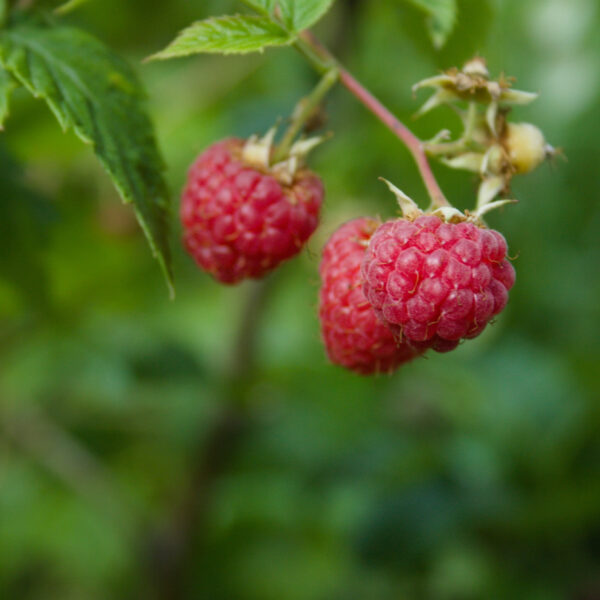
Jump to: Sweetest Varieties | Summer Varieties vs Everbearing | Growing Tips for Sweetest Raspberries | How & When to Harvest
This post may contain affiliate links. As an Amazon Associate, I also earn from qualifying purchases. You can read our disclosure information here–
What are the sweetest raspberry varieties?
As with most commercially grown fruits and vegetables, there are different varieties of raspberries that will have nuanced flavor profiles.
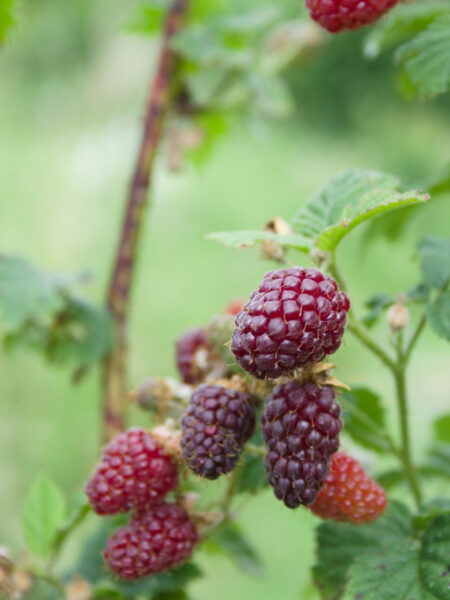
Selective cultivation has allowed growers to produce a whole range of raspberry cultivars, which belong to the same species but have different characteristics.
These hybrid cultivars of raspberries were bred for accentuating a particular trait that the consumer or gardener finds desirable (aka, sweetness, color, yield, thorns, etc.)
The raspberry cultivars that produce raspberries you see in the supermarket tend to have been selected for appearance and shelf life. They need to be big, evenly colored, and nice and shiny, as well as relatively sturdy so they survive all the way from the farm to your fridge.
In the process of producing these supermarket berries, flavor and sweetness aren’t always prioritized. This is why, as with strawberries, tomatoes, blueberries and other produce, cultivars meant for home-growing often taste far superior.
So which raspberry varieties should you choose if you want divinely sweet berries? Below, let’s have a look at a few of my favorites to grow at home!
Did you know? Raspberries belong to the genus Rubus, which also contains blackberries and similar plants. Most varieties are crosses between Rubus ideaus and R. strigosus, the European and American red raspberry.
Summer Raspberries vs Everbearing (Fall) Raspberries
When choosing the right raspberry plant to grow in your garden, remember that they can be divided into two basic categories:
- Summer-bearing or floricane raspberries are more common. They only grow fruits on last year’s stems (floricanes), which will be ripe during the summer months.
- Everbearing raspberries, also known as or primocane raspberries, produce their fruits later and on this year’s stems (primocanes). This being said, they can be pruned to also produce some berries on last year’s stems, meaning you can hopefully get a double harvest in both summer and fall. Hence the “everbearing” denomination!
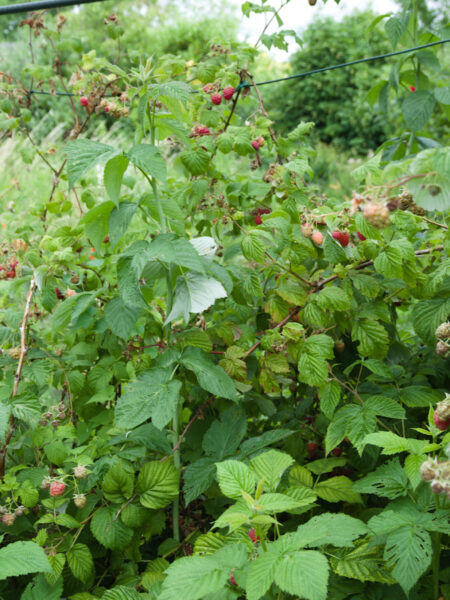
There are some dazzlingly sweet berries to be had in both of these categories.
The charts below will help you select the sweetest raspberries for your particular climate and preferences:
Sweetest summer-bearing raspberries
| Name | USDA zones | Ripening Time | Characteristics |
|---|---|---|---|
| Tulameen | 6-9 | Late: July-Aug | Large berries |
| Cascade Delight | 6-9 | Late: July-Aug | Med-sized, firm |
| Killarney | 3-8 | Mid: July | Very cold-hardy |
| Boyne | 3-8 | Early: June-July | Very cold-hardy |
| Cascade Gold | 4-9 | Mid: July | Yellow berries |
| Chilliwack | 4-8 | Late: July-Aug | Almost thornless |
Sweetest everbearing raspberries
| Name | USDA zones | Ripening Time | Characteristics |
|---|---|---|---|
| Anne | 4-9 | Aug to Oct | Yellow, very sweet |
| Caroline | 4-9 | June to Oct | Giant berries |
| Jewel | 4-8 | June to Oct | Black raspberry |
| Fall Gold | 4-8 | July to Sept | Large; yellow |
| Amity | 3-9 | June-Late Aug | Cold-hardy |
Did you know? Botanically speaking, raspberries and other members of the genus Rubus are not considered true berries. They’re actually aggregates of a whole bunch of tiny fruits. This explains why they consist of tiny sections (called drupelets) that each carry their own seed!
5 Key Tips for Growing the Sweetest Raspberries
Tip #1: Fertilizer
Once spring has sprung, your raspberry plants will begin to leave dormancy and become active. Time to give them some fertilizer to help wake them up! If you’ve got compost or rotted manure at your disposal, that’s great and can be added in the form of a mulch in spring.
Alternatively, you can use a commercial synthetic or organic fertilizer. A balanced one, like 10-10-10 or 20-20-20, should work well. Granular feed is commonly used, but water soluble is fine too.
Remember that raspberries grown in pots usually need more fertilizer!
Tip #2: Soil
Raspberries are not fussy when it comes to soil, but you should still be sure to provide the best possible medium for the tastiest fruits.
The most important characteristics of good raspberry soil are:
- Lightly acidic: the soil should have a pH between 5.5-6.5.
- Well-draining: loam or sandy loam works very well. Clay-heavy soils are not ideal.
- Rich: the soil should be high in organic matter. Compost or manure can help with this.
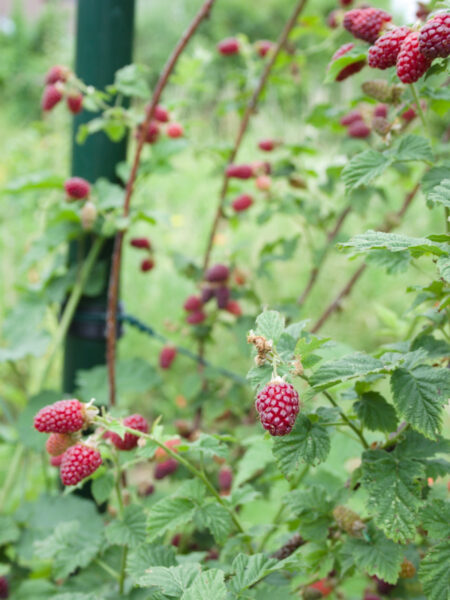
Tip #3: Light
Most plants that produce fruit need full sun for their crops to develop the best flavor. Raspberries are no exception.
Although they can be grown in partial shade, the fruit they produce in these conditions will be better for jams and the like, as it won’t develop optimal sweetness.
For delicious raspberries, then, give your plants at least 6-8 hours of full sun. In harsh, dry climates you can prune a little less vigorously to make sure the fruits get enough shade and don’t burn.
Tip #4: Water
Those juicy raspberries are filled with water, so make sure your plant gets as much as it needs to produce them!
Leaving raspberries to go thirsty on a regular basis can lead to fruit loss or a disappointing harvest.
Although the exact amount of water a raspberry bush needs will depend on your climate and how you grow it (i.e., container plants dry more quickly than those in full soil) most growers consider 1-1.5″ a week a good place to start during the summer months.
If your plants don’t get the required amount of water from rainfall alone, they’ll need help from you.
Many serious growers swear by drip irrigation, but if that’s not an option or if it’s a bit much for you, any watering method works.
Tip #5: Pruning
Proper pruning is crucial if you want to be able to harvest lots of tasty raspberries. If left alone, they tend to completely overcrowd themselves, becoming much too dense and with the outer and top canes shading out the inner and bottom ones.
How you should prune depends on what type of raspberry cultivar you chose. Remember, a floricane is a 2-year-old stem. A primocane is a stem that developed this year. See above definitions for more details.
Raspberry pruning is done when the plant is dormant, in late fall or early spring:
- Summer-bearing raspberries: Remove spent floricanes, which you can recognize by their brown bark and the remains of fruits. Leave the fresher primocanes so that they can develop into floricanes next year, removing only those that are causing overcrowding.
- Ever-bearing raspberries: Just prune those bad boys down to the ground, optionally leaving a few primocanes to develop into floricanes next year. This’ll get you a small summer harvest as well as a fall one.
Did you know? Raspberry plants are often trellised. This isn’t strictly necessary, but it does really help keep the fruits off the ground and prevents spoiled fruit. This article from Roots and Boots shows a step-by-step on building your own raspberry trellis
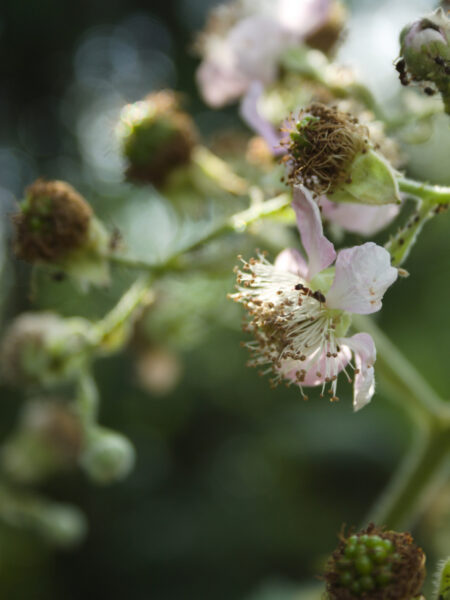
Did you know: Blackberry care is very similar to raspberry care so most of the tips in this article apply to blackberries also.
When & How To Harvest Raspberries
I’ve already mentioned that supermarket raspberries tend to be less sweet than home-grown ones because they’re selected for factors like appearance and shelf life.
One other huge difference between store-bought berries and fruit from your own garden is that the former tend to be picked unripe so they don’t spoil as quickly, whereas you can pick the latter when they’re at their very best.
You should harvest your raspberries when they’re fully red (or yellow, or black, depending on the variety).
Ripe fruits will be soft and come off the plant very easily. If you have to exert pressure to get them to release, they’re not ready!

When picking, make sure the raspberries are dry. Gently close your fingers around the berries and give them a gentle tug without squeezing them. Carefully lay them in a basket and get them in the fridge ASAP without washing them.
When time comes to eat your berries, just pop them in a colander, rinse gently and swirl them around to remove any dirt. You can dry them on paper towels; avoid using normal towels unless you don’t mind stains!
Frequently Asked Questions
Sure do! Raspberries are full of seeds, one in each of those little round sections. Luckily, they’re not bothersome at all. They add some crunch and plenty of fiber.
If you’re making a raspberry smoothie, it can help to strain it after blending so you don’t have to chew your drink!
The exact season for raspberries depends on your local climate and can even vary year by year depending on weather conditions. You can usually expect most berries to ripen between June and August, but if it’s nice and warm where you are, you could get berries all the way from May (or even earlier!) to November.
Unfortunately, fresh raspberries are highly perishable. The sturdier supermarket varieties may last for up to a week in the fridge, but I’ve found my home-grown ones to go off much sooner than that. I try to eat them within two days or preserve them. Which brings us to our next FAQ…
Freezing raspberries allows you to store them for a year or more, meaning they’ll always be available when you want to make desserts, smoothies and jams. The best way to do it is to first lay them out on a baking sheet in a single layer, placing them in the freezer like this, and then bagging them up once they’re frozen. This ensures they don’t stick together in a solid block.
Sure! There aren’t any toxic lookalikes for berries of the genus Rubus (collectively called brambles), which are all edible. As such, if you find some wild red or black raspberries, salmonberries, dewberries, cloudberries, thimbleberries or similar, you can eat them. Just make sure they’re fully ripe, as some varieties can cause stomach upset if they’re not ready.
If you like my articles about cooking and gardening, subscribe to my weekly newsletter, where I share free recipes and gardening tutorials.

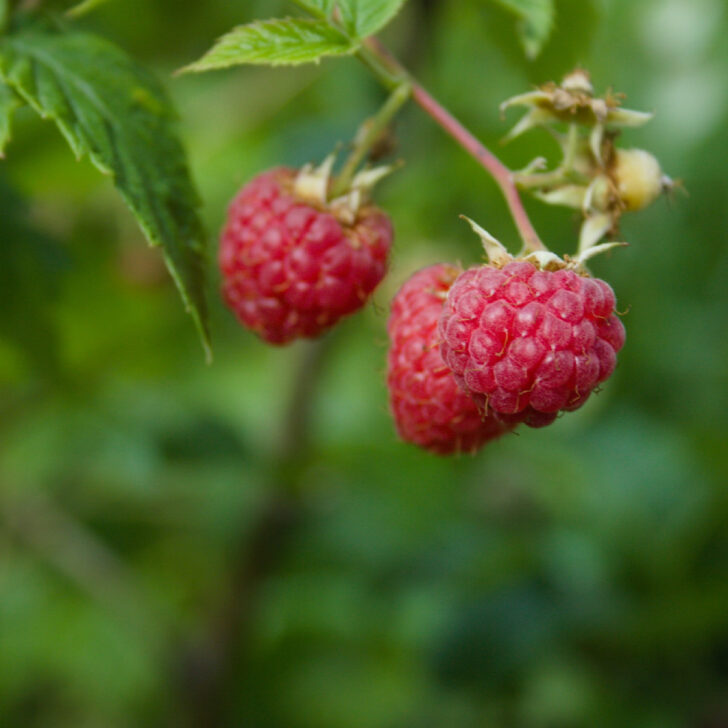
An excellent write up on raspberry, Dorothy. I have a 10 foot patch of raspberry here in Enumclaw which is about 30 years old. The patch produces an excellent crop each summer.
I also enjoyed your article on blueberry.
(GO SCOTS -DDHS)
Hi Jim! Thank you so much for commenting on the post (it helps!). I’m glad you enjoyed it. A 30-year old patch that keeps producing is certainly somethin I have not been able to pull off yet. Any secrets? And yes…GO SCOTS!
Where do you buy your everbearing plants from? Thank you
I get them from Indiana Berry & Plant Company. They are called Joan J Thornless. They’re great and produce a lot the second year.
Great information. Thanks
So happy to hear you found it helpful! Thanks for letting me know Michael.